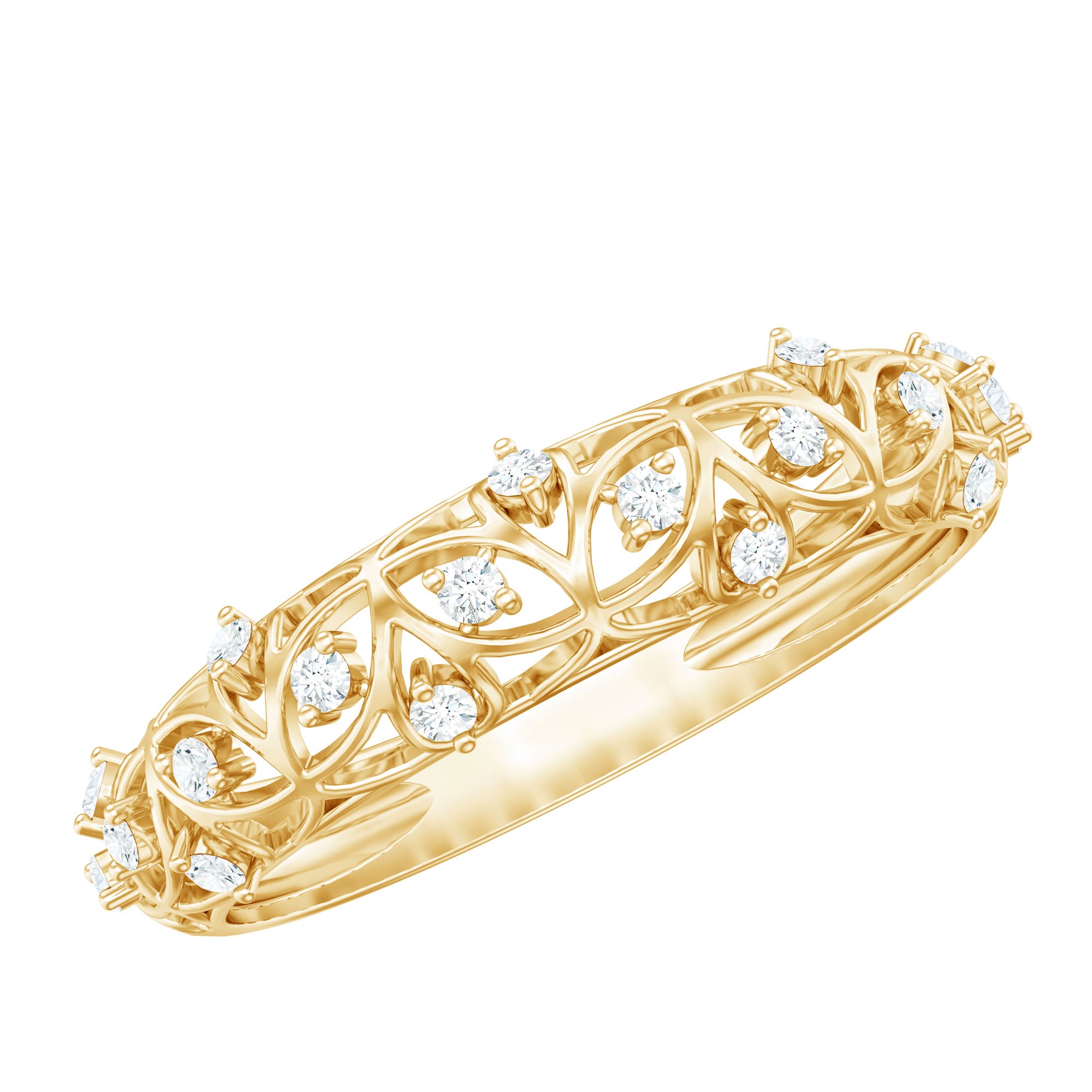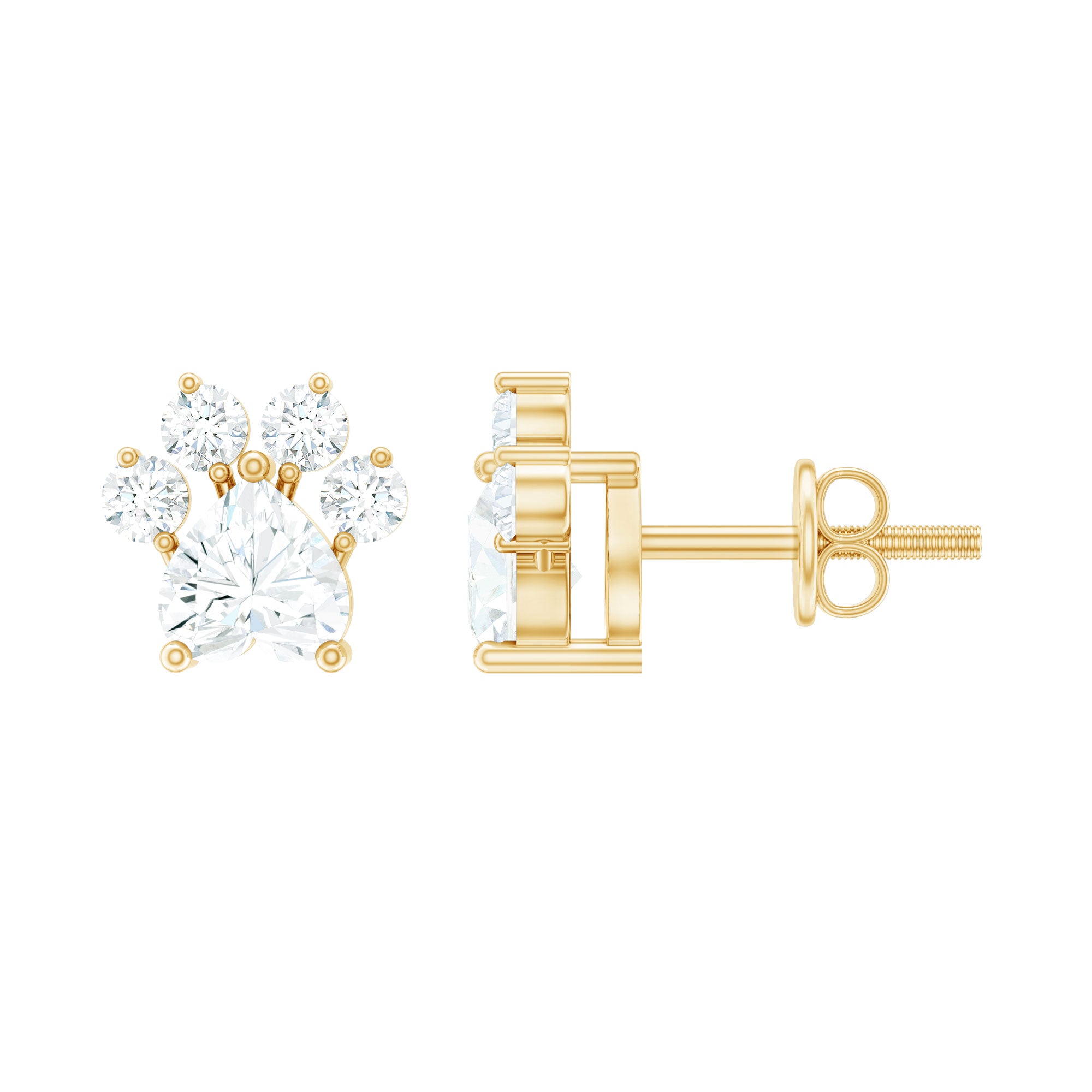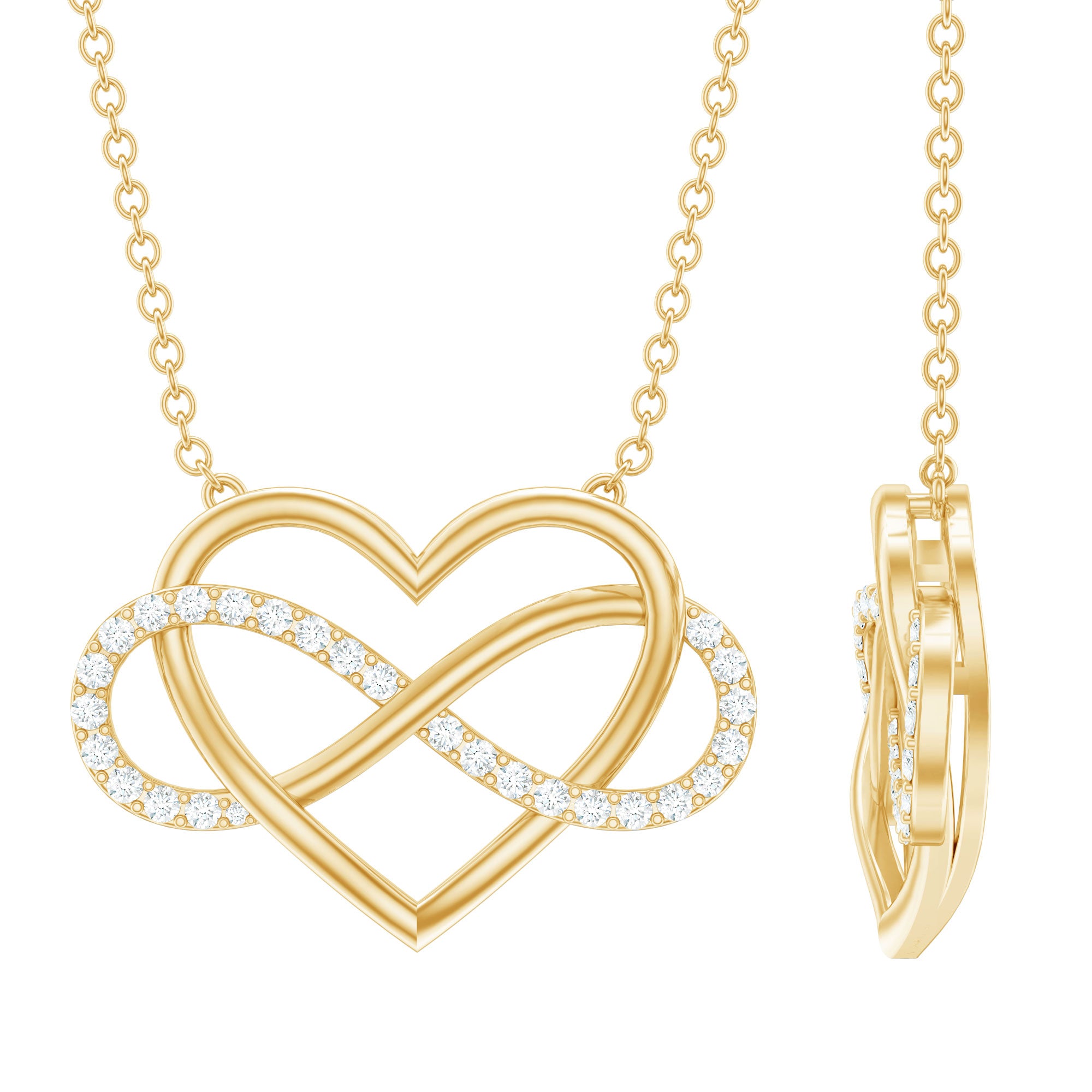All About Diamond: Types, Colors, Description, Origins & Details
Leave a bit of sparkle wherever you go and living up to that is Diamond: bright, sparkling and radiant! Sure to mesmerize any eye with its grace! This April birthstone has been well known for its elegance and is without any doubt, a woman’s best friend. Everybody has a separate corner for Diamond in their jewelry box. Who doesn’t love a little glow in their jewelry after all? Since we can never get bored of embedding our jewelry with diamond, don’t you think we should be a little more familiar with this lustrous beauty? For time immemorial, diamonds have not only been a symbol of royalty but also of love and commitment. Hence, they are conventionally been used in crafting engagement rings and other jewelry. To help you buy your diamond jewelry with more efficiency, we have come up with our Diamond education guide that is the comprehensive one step guide to address all the basic knowledge revolving around the famous 4 C’s of Diamonds along with some engrossing history and origin.
Properties of Diamond
Hardness
Do you know why Diamond has been regarded as a ‘forever stone?’ Well, having set a benchmark of hardness with a perfect 10/10 rating on Moh’s scale, Diamond can be worn anyday, everyday, taking the wear and tear of regular use with much ease.
Luster
Is someone there who isn’t a fan of the sparkle of Diamond? No, right? The undying sparkle of Diamond is thanks to its non metallic luster which is further enhanced with the perfect facets, thanks to the skilled artistry.
Fluorescence
Fluorescence is graded based on the diamond’s appearance in Ultraviolet Light. Due to trace minerals that occur in the diamond as it forms naturally, or within the lab, the diamond can emit a blue glow.
Origin & History
Does the craze of diamond even today give you an idea regarding how ancient its charm is? Having a history dating back to around 4 BC, Diamond was first discovered in India and were immediately hailed for their brilliance and sparkle. So much so that they were transported through a silk road connecting India and China. Well, there are some fun stories linked with diamond as well wherein Greek mythology suggests that Zeus transformed some of his children into adamas, meaning ‘unconquered’ which meant diamond. And Romans believed cupid’s arrows were beautifully embedded with this April birthstone. In Europe, around mid 1800s, a young boy was roaming around the Orange river when he was shine struck by the gorgeous beauty of Diamond and that’s when Diamond is supposed to be discovered in Europe.
Where is Diamond found?
From where exactly does this sparkling April birthstone come from? Well, the top producers of April birthstone Diamond today are Australia, China, Russia, Botswana, Brazil, South Africa and Congo. Talking about its specific formation, these are formed under intense temperatures in carbon deposits and time may vary. Diamond education just got a lot more informative, right?
Natural Diamond versus Lab Created Diamond
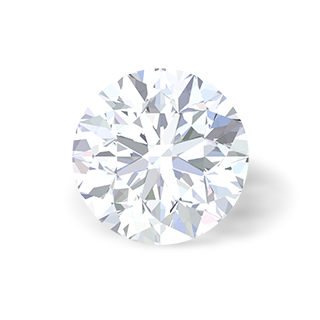
Natural Diamond
A natural diamond, just how its name suggests, is mined from the earth’s crust and their natural growth takes time. And that’s why they are more valuable and pricey. Apart from that, they possess some nitrogen content as well. A natural diamond is known for its irresistible sparkle and contains less inclusions.
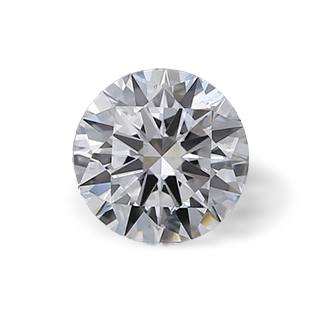
Lab Created Diamond
A lab created diamond is formed of course in laboratory by recreating the same condition. Since it is man made, it is lesser in value than its natural counterparts, making it a cheaper alternative as well. Apart from that, it tends to have more inclusions than natural diamond.
Diamond Quality and Price Filters
Let us guess! Wondering how to buy diamond? Well, to judge the quality of this April birthstone yourself, we say why not get a little familiar with its 4 Cs as well? The brilliance, luster and sparkle of a premium quality Diamond can never fail to impress. Let’s give you a glance:
Color
We’re all fascinated by the luster and sparkle of a colorless diamond! But did you know diamond comes in a range of different colors, each graded on a certain level. Well, the rule is: lesser the color, more the value. Take a glance:
- Colorless: The colorless category of diamond is without a shred of doubt the most valuable out of the lot. And is given a D grade for its brilliant luster, sparkle and colorless beauty.
- Nearly Colorless: These are another sought after category of diamond known to be almost colorless with a grading of G.
- Yellowish Diamond: Diamond having a yellowish tint is lesser in value since it does not possess an eye clean transparent look, graded from K to M.
- Black Diamond: The lustrous black beauty of Diamond is the newest in trend and valuable because of its dramatic and bold appearance.
- Other Colorless: The lustrous black beauty of Diamond is the newest in trend and valuable because of its dramatic and bold appearance.
Clarity
Another measuring factor while buying a diamond is Clarity. Clarity can be defined as the measure of minor imperfections on and inside the diamond. The flaws occurring on the surface are termed as Blemishes while the imperfections found trapped inside the diamond are called Inclusions. On the basis of clarity, these are graded from flawless, nearly flawless, very slightly included to included and eye-visible blemishes. Again, it is quite obvious that the diamonds with little to no imperfections will be costlier.
Carat
It is rare to find diamonds with high carat weight and will cost much higher. In our collection, the carat weight of diamond ranges between 0.01 to 2 CT.
Cut
Another integral factor of measurement is the Cut of a Diamond and perhaps the most important one as the Cut determines how well a diamond can return the light back to your eye. It is the Cut of the Diamond which makes it sparkle!
Black Diamond Grading Value
You know how we’ve always followed the habit of grading something in order to judge its quality? Well to simplify the tedious process, we’d do just that for you. Take a look at our diamond education chart:
AAAA-AAA
The one that nobody can resist! The top 1 % of Black Diamond belonging to AAAA category is highly sought after and known for that perfect luster, brilliance and eye-clean clarity.
AA
The top 10 % of Black Diamond belonging to this category possess great luster, sparkle and shine, just a little less in value than the above category.
A
The top 20 % that belong to this category are also not that easy to find and are known for their brilliance and luster.
B
The top 50 % of Black Diamond belonging to this category are lesser in value as compared to their counterparts.
Benefits of Diamond
Diamond has taken over the world with its charm today! And the icing to that are the wholesome benefits that it provides to the wearer. Beauty with benefits indeed. Who wouldn’t be mesmerized. Let’s give you a glance:
Physical Healing
Certainly what adds to the value of this April birthstone! Diamond, being known to the world for its magnificent charm possesses some physical healing benefits including help with kidney problems, digestion, treatment of allergies and skin related issues, thus providing stamina to the overall body. In fact, Hindus used to believe that the vibrations from a Diamond had the ability to make the heart happy.
Emotional Healing
We say a mere glance at Diamond is enough for that! Diamond, similar to its heavenly appearance, can relieve emotional stress, depression and trauma, blessing the wearer with better imagination, creativity and cheerfulness. It also brings self confidence and fearlessness in the life of the wearer.
Spiritual Healing
Did you know the name diamond itself means ‘invincible.’ That’s because it is believed to protect against negative energies. It is even known to instill love, loyalty and trust in the life of the wearer.
Frequently Asked Questions
How is a diamond made?
Naturally diamonds are formed inside the Earth’s mantle. The conditions of extreme temperature and pressure prevailing there forces the carbon from organic matter to undergo changes in its crystalline structure, the result of which is the natural diamond. The process of which takes billions of years.
What is difference between lab grown and natural diamond?
Although lab grown diamonds are same in the chemical composition, however, there are few differences based on price point, environmental damages and ethical concerns.
The average lab diamond costs 20-30% less than a mined diamond due to the fact that they are fairly new to the market.
Environmental concerns are almost eliminated because mining gives rise to irreversible ecological damage to the earth’s mantle.
With lab grown diamonds, one can rest assured that the unethical means such as slave labor are totally eliminated.
Where do diamonds come from?
Over 2400 years ago, the diamonds first appeared in India and over time, diamonds were found in many other areas around the world, such as, many places in Africa. In current era, diamonds are sourced from Africa, Russia, Australia and Canada.
How to clean diamond jewelry?
At home you can simply prepare a solution of warm water and basic dishwasher soap and soak your ring for about 20 to 40 minutes. However, if the ring has some residue you can make use of a very soft brush. Use of Chlorine or other harsh chemical, even some certified cleaners can damage your jewelry.
Alternatively, you can prepare a mixture of 1/2 cup vinegar and 2 TSP baking soda and soak your jewelry into the solution for 2-3 hours then rinse it under cold water.
How much does one carat diamond cost?
It is hard to exactly throw a number out in the open since the price of a carat diamond might depend upon factors such as grade of the diamond as well as the location from where you are buying it, however, on an average, the price of a carat may vary from £1,910 - £15,650.
What is a diamond certification?
The most common Diamond Certifications includes from GIA, AGS IGL, SGL, EGL, GSI and HRD labs. It is usually a document you receive on the behalf of the aforementioned 3rd party labs which describes a diamond in all of its characteristics.
Each and every party’s defining grounds may defers.
Which type of diamond is best?
Diamond graded with flawless clarity is known to be of best quality and is extremely rare to find. It has no inclusions even when observed under a microscope.
Can Diamond cut glass?
What if we tell you yes it can! Well, diamond has a hardness rating of 10/10 on Moh’s scale. So much so that the hardness of other gemstones is judged on the basis of this benchmark set by Diamond.
What is a good color diamond?
The April birthstone Diamond labelled as ‘colorless’ or ‘nearly colorless’ is the most valuable and has a timeless charm.
Conclusion
Hailed as a ‘forever stone,’ the charm of Diamond is something that none of us can resist! We’re all so fascinated by it that we also cannot stop ourselves from buying diamond jewelry every now and then. It is like our go to jewelry, isn’t it? And knowing that, we thought why not get you a little more familiar with your favorite April birthstone and help you judge the quality of your jewelry better. In our diamond education guide, we have tried to cover everything from the fun history, wholesome benefits of this precious stone to its famous 4 Cs and grading system. We hope we kept you asking for more and you had something to take away from this fun filled yet informative discussion. Here we sign off, wishing you all the luck in picking your favorite jewelry!


